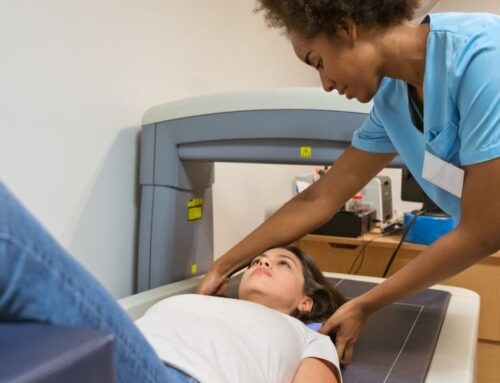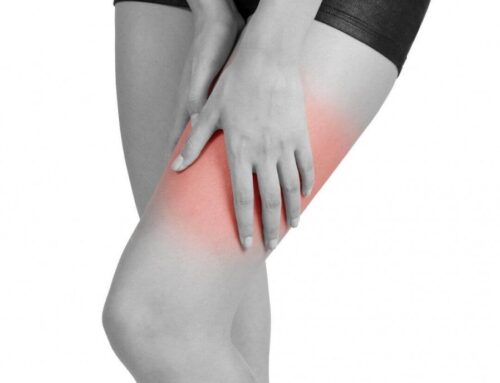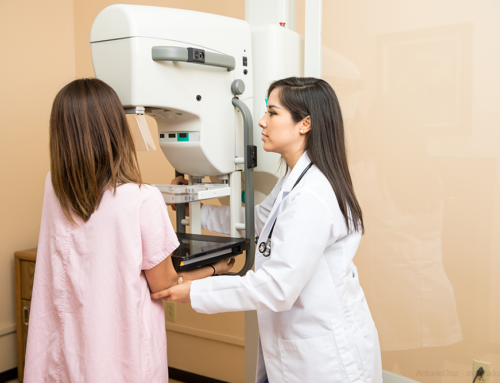There are times at which breast pain can feel like a normal occurrence. For example, many women experience breast soreness and tenderness at a certain point in their menstrual cycle. When breast pain is not part of the cycle or it changes in some way, its occurrence can feel frightening. Many women feel immense anxiety if they develop breast pain, thinking that this symptom may indicate breast cancer. Fortunately, this is rarely the case. That said, though, any new breast symptoms that occur should be discussed with a physician. This is not limited to breast lumps. Pain also qualifies for a thoughtful discussion with a primary care provider or gynecologist. This doctor may order diagnostic imaging just as they would to evaluate a breast lump.
Breast pain is a relatively general term that can describe tenderness, sharp pain, and other sensations. In most cases of unexplained breast pain, hormones are a contributing factor. Primarily, it is changes in estrogen and progesterone that are involved. This is because these two hormones have a stimulating effect on breast tissue. Pain is one of the primary symptoms of this stimulation, and this stimulation is the reason why most cases of breast pain occur about one week before menstruation. The type of pain, location of pain, and its severity can all change from one month to the next. Women can learn a lot by paying attention or noting the particulars of their symptoms, including the timing of pain during their menstrual cycle.
In addition to monthly breast pain, another time during which women tend to report more of this symptom is during perimenopause. It is not uncommon for women to develop new breast pain during this phase of life. Again, we look to the normal changes in sex hormones. During perimenopause, these changes can be very erratic. Women who receive hormone replacement therapy during perimenopause may also develop breast pain as a response to their changing hormones. In this case, the symptom may resolve as the body adjusts. Women should also note that they still have enough estrogen and progesterone in their bodies to cause new breast pain even after menopause. In this case, because the menstrual cycle has ended, pain may be more unpredictable.
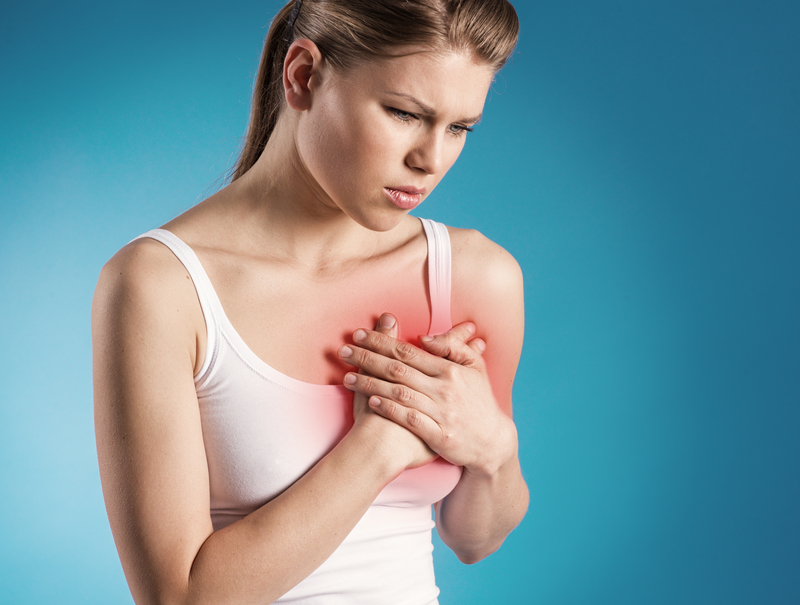
Overview
Breast pain (mastalgia) can be described as tenderness, throbbing, sharp, stabbing, burning pain or tightness in the breast tissue. The pain may be constant or it may occur only occasionally, and it can occur in men, women and transgender people.
Breast pain can range from mild to severe. It may occur:
- Just a few days a month, in the two to three days leading up to a menstrual period. This normal, mild-to-moderate pain affects both breasts.
- A week or longer each month, starting before a period and sometimes continuing through the menstrual cycle. The pain may be moderate or severe, and affects both breasts.
- Throughout the month, not related to a menstrual cycle.
In men, breast pain is most commonly caused by a condition called “gynecomastia” (guy-nuh-koh-MAS-tee-uh). This refers to an increase in the amount of breast gland tissue that’s caused by an imbalance of the hormones estrogen and testosterone. Gynecomastia can affect one or both breasts, sometimes unevenly.
In transgender women, hormone therapy may cause breast pain. In transgender men, breast pain may be caused by the minimal amount of breast tissue that may remain after a mastectomy.
Most times, breast pain signals a noncancerous (benign) breast condition and rarely indicates breast cancer. Unexplained breast pain that doesn’t go away after one or two menstrual cycles, or that persists after menopause, or breast pain that doesn’t seem to be related to hormone changes needs to be evaluated.
Symptoms
Breast pain can be cyclic or noncyclic. Cyclic means that the pain occurs on a regular pattern. Noncyclic means that the pain is constant, or that there’s not a regular pattern. Each type of breast pain has distinct characteristics.
| Cyclic breast pain | Noncyclic breast pain |
|---|---|
|
|
Extramammary breast pain
The term “extramammary” means “outside the breast.” Extramammary breast pain feels like it starts in the breast tissue, but its source is actually outside the breast area. Pulling a muscle in the chest, for example, can cause pain in the chest wall or rib cage that spreads (radiates) to the breast. Arthritis that involves the cartilage in the chest, also known as costochondritis, can also cause pain.
When to see a doctor
Make an appointment with your doctor if breast pain:
- Continues daily for more than a couple of weeks
- Occurs in one specific area of your breast
- Seems to be getting worse over time
- Interferes with daily activities
- Awakens you from sleep
Breast cancer risk is very low in people whose main symptom is breast pain, but if your doctor recommends an evaluation, it’s important to follow through.
Causes of breast pain
Breast pain is usually linked to periods. Sometimes it can be caused by a health condition or medicine.
Breast pain linked to periods
Breast pain linked to periods usually:
- begins up to 2 weeks before a period, gets worse and then goes away when the period ends
- feels dull, heavy or aching
- affects both breasts and sometimes spreads to the armpit
Other causes of breast pain
Other causes of breast pain include:
- injuries or sprains to the neck, shoulder or back – these can be felt as breast pain
- medicines like the contraceptive pill and some antidepressants
- conditions like mastitis or a breast abscess
- pregnancy
- hormone changes during the menopause
Breast pain by itself is unlikely to be a symptom of cancer.
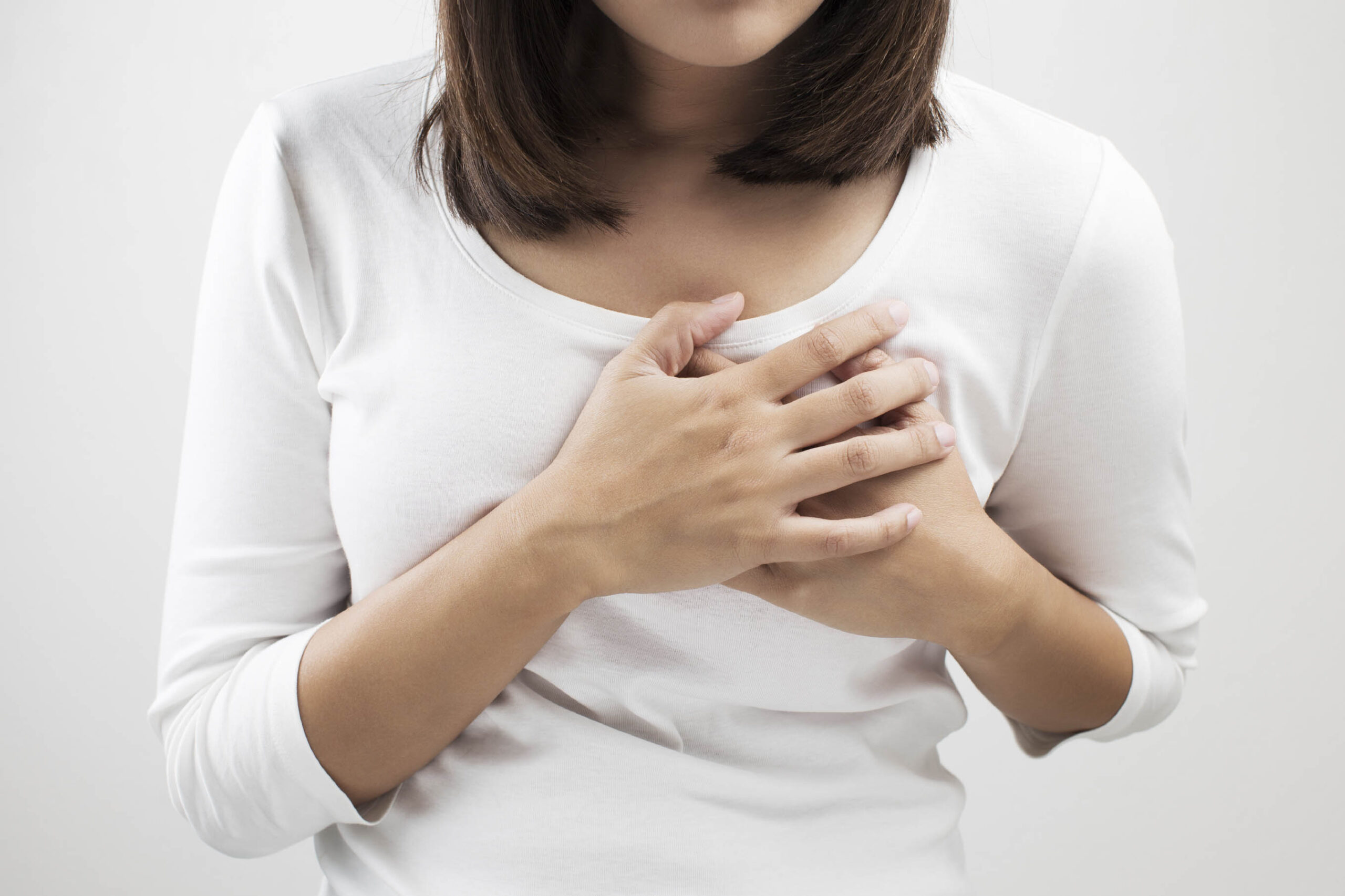
Woman having a pain in the heart area
Things you can do to ease breast pain
To help ease breast pain:
- take paracetamol or ibuprofen, or rub painkilling gel on your breasts
- wear a properly fitted bra during the day and a soft bra to sleep in
There’s little evidence that vitamin E tablets or evening primrose oil help with breast pain.
10 Reasons Your Breasts May Hurt
- Hormones are making your breasts sore.Hormonal fluctuations are the number one reason women have breast pain. Breasts become sore three to five days prior to the beginning of a menstrual period and stop hurting after it starts. This is due to a rise in estrogen and progesterone right before your period. These hormones cause your breasts to swell and can lead to tenderness.“It’s normal to have breast tenderness that comes and goes around the time of your period,” says Wright. “It’s nothing to worry about.”If you become pregnant, your breasts may remain sore during the first trimester as hormone production ramps up. Breast tenderness is one of the earliest signs of pregnancy for many women.
Steps you can take to minimize sore breasts include:
- Eliminate caffeine
- Eat a low-fat diet
- Reduce salt intake
- Avoid smoking
- Take an over-the-counter pain reliever
- Ask your doctor if switching birth control pills or hormone replacement therapy medications may help
- You have a breast injury.Like any part of your body, breasts can be injured. This can happen because of an accident, while playing sports or from breast surgery. You may feel a sharp, shooting pain at the time of injury. Tenderness can linger for a few days up to several weeks after trauma to the breast. See your doctor if the pain doesn’t improve or you notice any of these signs:
- Severe swelling
- A lump in the breast
- Redness and warmth, which could indicate an infection
- A bruise on your breast that doesn’t go away
- Your breasts hurt due to an unsupportive bra.Without proper support, the ligaments that connect breasts to the chest wall can become overstretched and painful by the end of the day. The result is achy, sore breasts. This may be especially noticeable during exercise. Make sure your bra is the correct size and provides good support.
- Breast pain is really coming from your chest wall.What feels like breast pain may actually be coming from your chest wall. This is the area of muscle, tissue and bone that surrounds and protects your heart and lungs. Common causes of chest wall pain include:
- A pulled muscle
- Inflammation around the ribs
- Trauma to the chest wall (getting hit in the chest)
- Bone fracture
- Breastfeeding is causing breast tenderness.Breastfeeding can sometimes be the source of breast pain. Some of the things you can experience while nursing include:
- Painful nipples from an improper latch (the way a baby latches on to suck)
- Tingling sensation during letdown (when the milk starts to flow to the baby)
- Nipple soreness due to being bitten or having dry, cracked skin or an infection
If you have pain while breastfeeding, it’s best to talk to your doctor or a lactation consultant. They can help you troubleshoot the problem while maintaining your milk supply.
- You have a breast infection.Breastfeeding women are most likely to get breast infections (mastitis), but they occasionally occur in other women, too. If you have a breast infection, you may have a fever and symptoms in one breast, including:
- Pain
- Redness
- Swelling
If you think you may have a breast infection, it’s important to see a doctor. Treatment typically includes antibiotics and pain relievers.
- Breast pain could be a medication side effect.Some medications may cause breast pain as a side effect. Talk to your doctor about the medications you’re on and if this could be the case for you. Some drugs with this known side effect include:
- Oxymethone, used to treat some forms of anemia
- Chlorpromazine, used to treat various mental health conditions
- Water pills (diuretics), drugs that increase urination and are used to treat kidney and heart disease and high blood pressure
- Hormone therapies (birth control pills, hormone replacement or infertility treatments)
- Digitalis, prescribed for heart failure
- Methyldopa, used to treat high blood pressure
- You have a painful breast cyst.If a tender lump suddenly appears in your breast, you may have a cyst, says Wright. “These fluid-filled lumps aren’t dangerous and often don’t need to be treated as they may resolve on their own. But it’s important to get any lump in your breast evaluated by a doctor.”To diagnose a cyst, your doctor may recommend a mammogram, ultrasound or aspiration (drawing fluid from the lump). Draining fluid from the cyst is also a form of treatment. If the cyst isn’t bothersome, you may not need any treatment at all.Learn more about breast cysts and other noncancerous breast lumps.
- You’re experiencing painful complications from breast implants. Some women have complications with breast implants, whether made of silicone or saline. One of the most common causes of pain after breast augmentation surgery is capsular contracture, when scar tissue forms too tightly around implants. Breast pain can also be an indication that one of your implants has ruptured. Talk to your doctor about any pain you’re having to determine if it could be related to the breast implants.
- Breast pain can sometimes be a sign of breast cancer.It’s unusual for breast cancer to cause pain, says Wright, but not impossible. Inflammatory breast cancer often causes pain but it’s rare, accounting for 1% to 5% of breast cancer cases in the United States. Symptoms of this aggressive disease often come on suddenly and progress rapidly. Inflammatory breast cancer may cause the breast to become:
- Red or discolored
- Swollen or heavy
- Painful
Skin on the breast may also thicken or dimple. If you’re concerned about inflammatory breast cancer, see your doctor immediately.
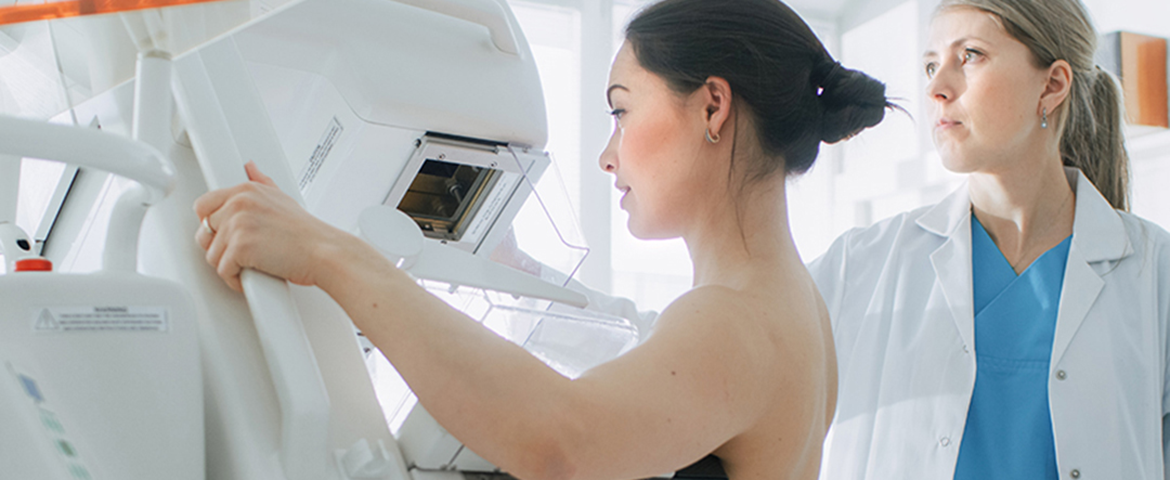
What Does Mammography Have To Do With Breast Pain?
Women who have breast pain may be advised to get a mammogram. While breast pain is typically not an early sign of breast cancer, it does not hurt (no pun intended!) to undergo a thorough evaluation of this symptom. In this case, a doctor may recommend diagnostic mammography, which may involve more images than a routine mammogram.

